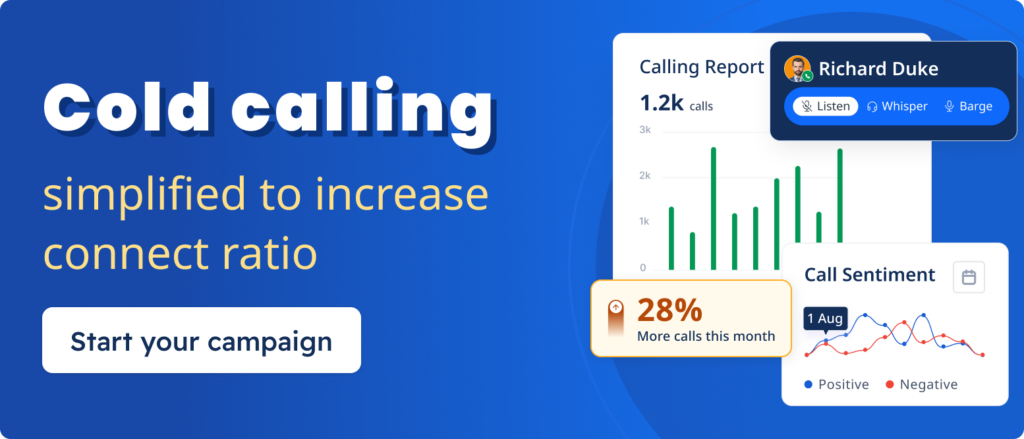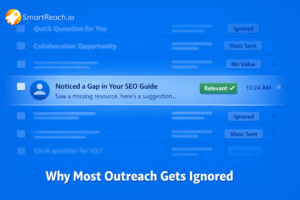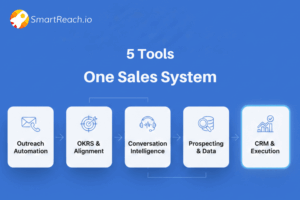Improve Cold Calls by Tracking Hang-Up Metrics
One of the most frustrating parts of cold calling is when a prospect answers, only to disconnect almost immediately.
You barely get a word in, and the opportunity slips away before the conversation even starts.
These quick hang-ups usually point to something specific – maybe the call came at the wrong time, the caller ID didn’t look trustworthy, or the opening line didn’t sound natural enough to keep the person engaged.
This is where hang-up metrics become important.
By studying when and how often prospects disconnect, you can find out patterns that reveal what’s working and what’s pushing people away.
With the right insights, those early endings can turn into better openings and more meaningful conversations.
In this blog, we’ll look at how to examine hang-up metrics, why they matter, and the simple changes you can make to reduce early disconnections.
What are hang-up metrics?
Hang-up metrics show you how often prospects end calls before a proper conversation begins.
They highlight the frequency, timing, and context of these early disconnections.
For example, if most people hang up within the first 5–10 seconds of your call, it could mean your introduction isn’t grabbing attention.
If hang-ups are linked to certain phone numbers, your caller ID might be the issue.
In short, hang-up metrics give you a clear picture of where and why calls are failing, so you can fix the weak spots in your outreach.
What factors cause early hang-ups for cold calls?
Early hang-ups usually happen for a reason.
Here are some of the most common ones:
- Suspicious caller ID → If your number shows up as “spam likely” or looks unfamiliar, many prospects won’t even bother listening.
- Weak or robotic intros → A scripted, flat introduction makes it easy for people to lose interest.
- Bad timing → Calling during busy hours or at odd times can lead to quick rejections.
- Wrong targeting → If the person isn’t the right fit, they’re more likely to hang up immediately.
- Tone and delivery → Speaking too fast, too slow, or without confidence can turn people off within seconds.
Knowing these reasons helps you figure out what to test and improve first.
Recommended Read: Win 1st 30 Seconds of Any Cold Call | Full Guide for Reps
How to examine hang-up metrics effectively?
When you break the hang-up metrics down, you’ll start to notice trends that explain what’s going wrong.
Here are a few ways to do it:
- Check when people hang up → Do they drop within the first 5–10 seconds, or after you finish your opening line? This shows if the issue is with your greeting or the way you start the pitch.
- Compare caller IDs → Prospects may trust some numbers more than others. If one number gets more hang-ups than another, your caller ID could be flagged or simply look suspicious.
- Look at timing patterns → Track which hours of the day or days of the week see the most hang-ups. Calling at the wrong time often leads to quick disconnections.
- Test different intros → Switch up your opening line and measure the impact. For example, a friendly “Hi, this is Alex. Did I catch you at a good time?” might hold attention better than a long, scripted opener.
- Compare across reps or campaigns → If one rep has fewer hang-ups, study their tone and style. If one campaign list performs worse, the targeting might be off.
By digging into these details, you’ll move past guesswork and find clear, actionable insights to improve your connect rates.
How to reduce early hang-ups for cold calls?
Once you know what’s causing quick disconnections, the next step is to fix them.
Small adjustments in your approach can make a big difference.
Here are several ways to reduce hang-ups:
- Start with a warmer intro
Avoid robotic, overused scripts. Begin with a friendly, natural line that feels human and not salesy. People respond better to authenticity. - Use local or trusted caller IDs
Prospects are more likely to answer and stay engaged when the number looks familiar. Rotating caller IDs or using local area codes can improve trust. - Personalize your opening
Mention the prospect’s company name, role, or industry in the first few seconds. This shows the call is relevant, not random. - Train on tone and pacing
Confidence, clarity, and a natural pace matter. Rushing or speaking too softly can cause instant drop-offs. Practicing tone can improve first impressions. - Improve call targeting
The better your lead list, the fewer rejections. Focus on verified prospects who fit your ICP (ideal customer profile).
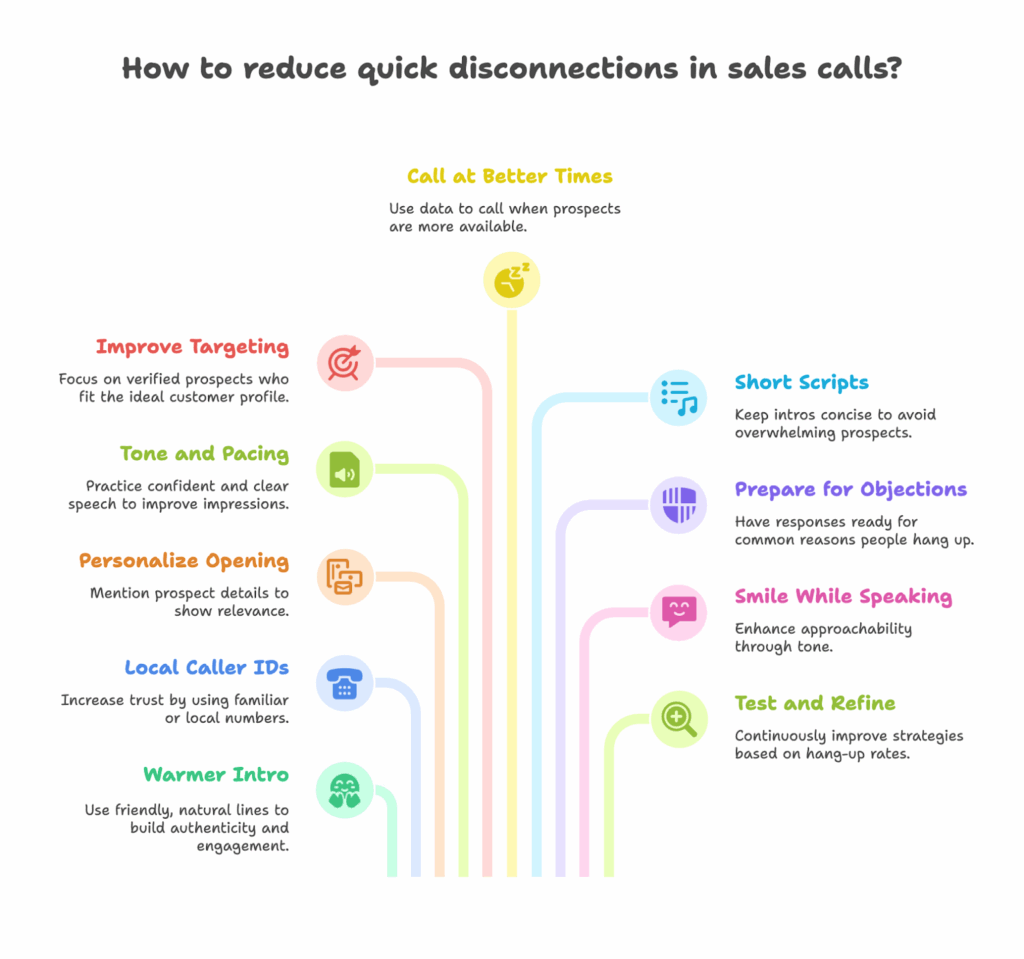
- Call at better times
Use data to find when prospects are more available. Often, early mornings, late afternoons, or just after lunch work better than busy hours. - Keep scripts short and clear
Long intros overwhelm people. Stick to short, to-the-point calling script that set the stage for a quick conversation. - Prepare for objections upfront
If you know common reasons people hang up (like “I’m busy”), prepare a one-line response that keeps them talking. - Smile while speaking
It may sound small, but your tone naturally becomes more approachable when you smile. Prospects can hear the difference. - Keep testing and refining
Don’t rely on one approach forever. Test new intros, scripts, and cadences, then monitor hang-up rates to see what works best.
With these adjustments, you’re not just reducing disconnections, you’re creating space for real conversations that lead to stronger results.
Recommended Read: Cold Calling Guide
How SmartReach.io helps to achieve your calling target
SmartReach.io is an all-in-one sales engagement platform built for B2B teams.
Along with email, LinkedIn, and WhatsApp outreach, it also comes with a powerful cold calling feature designed to help sales reps connect with prospects more effectively.
The PowerCaller feature is designed to make cold calling smarter and more effective.
You get features like personalized caller IDs, call scripts, live coaching options (listen, whisper, barge-in), and call recordings, all built to help sales teams connect better with prospects.
Check the video to know more about SmartReach’s PowerCaller feature.
With SmartReach cold calling reports, you can:
- Track call volume at every stage: See how many call tasks were assigned, how many were actually dialed, and how many ended up connecting. This helps you quickly spot gaps in execution and know whether low results are due to dialing or connection issues.
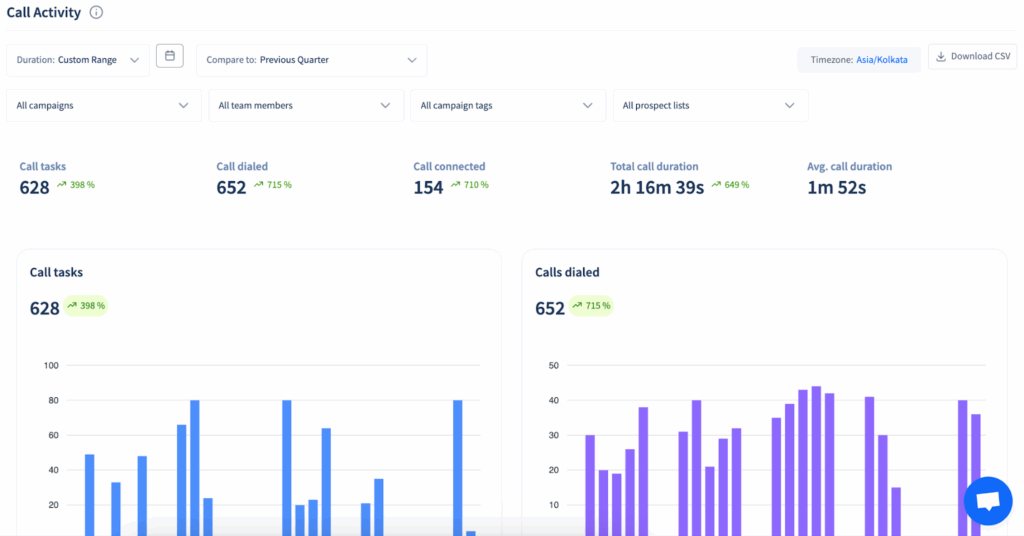
- Measure conversation quality and timing: Reports show both the total and average duration of calls. If prospects are hanging up within seconds, it’s a sign your introduction needs work. If longer calls happen at certain times of day, you’ll know the best windows for outreach.
- Understand outcomes with clear dispositions: Every call is categorized into outcomes like “No Answer,” “Callback Requested,” “Hung Up,” or “Declined”, etc. This lets you see where most of your calls are landing and whether your reps are moving conversations forward or losing them early.
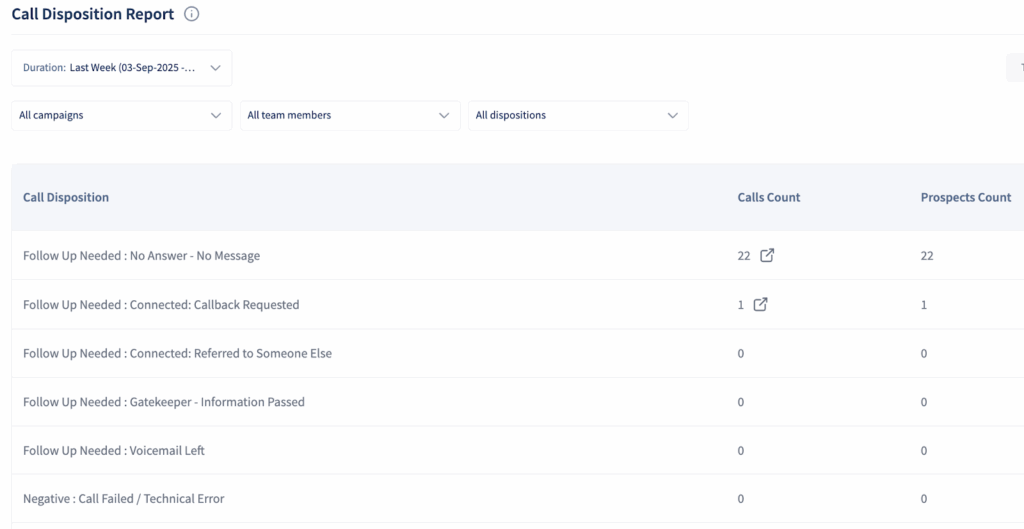
- Prioritize follow-ups automatically: Calls are tagged as positive, negative, or needing follow-up. This saves time by showing reps exactly which leads to pursue and which ones to let go, without having to dig through notes.
- Use recordings for coaching and feedback: Every call can be recorded, stored, and shared. Managers can review calls to find what works, train reps on better introductions, or spot areas where conversations lose momentum.
These reports give you a full picture of what’s really happening on your calls.
Instead of guessing why prospects hang up, you get data-backed answers that point to the exact areas that need improvement.
SmartReach doesn’t just track the numbers, it turns them into insights your team can act on to reduce hang-ups, improve connection rates, and make cold calling less stressful.
FAQs on hang-up metrics
What are hang-up metrics in cold calling?
Hang-up metrics track how often and when prospects disconnect calls before a conversation begins. They help identify patterns behind early disconnections.
Why do prospects hang up so quickly on cold calls?
Quick hang-ups usually happen due to suspicious caller IDs, poor timing, weak introductions, or targeting the wrong prospects.
How can I use hang-up metrics to improve cold calling?
By analyzing when hang-ups occur, comparing caller IDs, testing intros, and tracking call timing, you can adjust your approach and reduce early disconnections.
What is a good hang-up rate in cold calling?
There’s no single “perfect” number, but lower is always better. Monitoring trends over time is more important than aiming for a universal benchmark.
Can technology help reduce hang-ups?
Yes, tools like cold calling software provide reports that highlight hang-up rates, caller ID performance, and timing insights, making it easier to improve results.
Does the time of day affect hang-up rates?
Yes. Calling at busy or inconvenient times often leads to more hang-ups. Testing different time slots helps you find when prospects are more open to conversations.
How important is the opening line in reducing hang-ups?
Very important. Most hang-ups happen in the first few seconds, so a clear, friendly, and relevant intro can make prospects more willing to stay on the line.
Can improving call lists reduce hang-ups?
Absolutely. If you’re calling the wrong audience, hang-ups will stay high. A clean, accurate list with well-targeted prospects increases your chances of real conversations.
